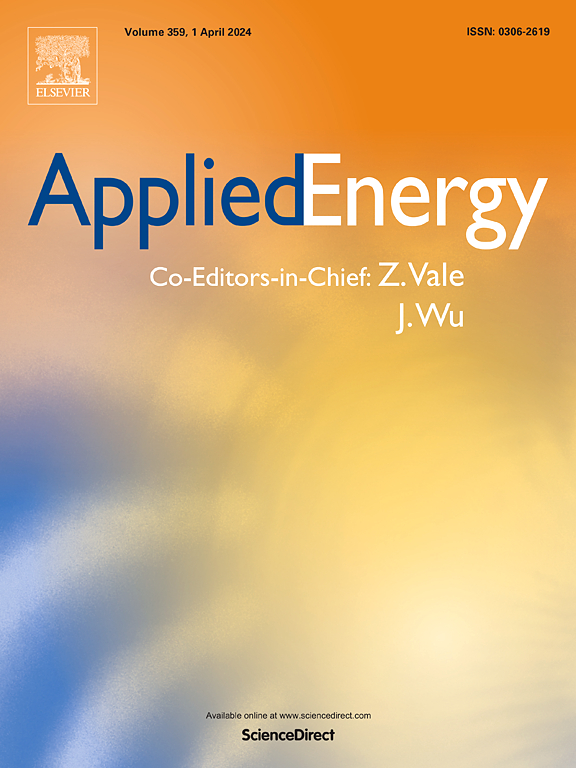高效超净氨燃烧技术研究:从燃烧动力学到发动机应用
IF 10.1
1区 工程技术
Q1 ENERGY & FUELS
引用次数: 0
摘要
在低碳经济的背景下,考虑到目前的技术形势,未来的能源系统仅依靠直接电气化在技术上是具有挑战性的,而且是不够的,特别是在重型运输部门。这就产生了对碳中性替代燃料的巨大需求。氨(NH3)作为一种潜在的脱碳选择,引起了燃烧界的高度关注。虽然氨被认为是一种很有前途的零碳燃料,但其燃烧特性仍然限制了其在能源转换中的实际应用。当前工作的目标是突出当前的最新技术以及仍然存在的挑战。这项工作的范围涵盖了从氨燃烧的基本特征和反应动力学,到它在内燃机(ICEs)中的应用。目前的工作主要分为四个部分。第一部分提出了氨作为燃料的潜力及其研究现状。第二部分介绍了氨与其他碳中性燃料共燃的基本燃烧特性和反应动力学;第三部分讨论了其作为燃料在内燃机中的应用,其中重点研究了光学发动机,有助于更深入地了解火焰在气缸中的形成和传播。第四部分重点介绍了先进人工智能(AI)算法在燃烧科学中的应用。氨和碳中性燃料的混合燃烧有可能在整个生命周期内实现真正的零碳排放。在基本燃烧特性水平上,燃烧增强剂的加入可以提高层流火焰速度(LFS)和点火延迟时间(IDT),极大地促进氨的燃烧。在动力学水平上,揭示了关键反应途径、CN组分之间的相互作用以及NOx/烟尘形成的机理。在发动机应用层面,通过以上基础研究,可以对发动机性能和排放特性有更深入的了解。从微观层面的燃烧动力学到宏观层面的发动机应用,希望本工作有助于全面了解氨燃烧的关键技术及其在交通运输领域的应用。本文章由计算机程序翻译,如有差异,请以英文原文为准。

Research on the state-of-the-art of efficient and ultra-clean ammonia combustion: From combustion kinetics to engine applications
In the context of a low-carbon economy, given the current technological landscape, relying only on direct electrification for the future energy system is both technically challenging and insufficient, particularly in the heavy transportation sector. This creates a significant demand for carbon-neutral alternatives fuels. Ammonia (NH3) represents itself as a potential option for decarbonization, attracting great attention of combustion community. Although ammonia is regarded as a promising zero-carbon fuel, its combustion characteristics still limit its practical application in energy transition. The objective of the current work is highlighting the current state-of-the-art as well as the challenges that still remain. The scope of this work spans from the fundamental characteristics and reaction kinetics of ammonia combustion, to its applications in internal combustion engines (ICEs). Current work is divided into four main parts. The first section proposes the potential of ammonia as a fuel and its current research status. The second part covers the fundamental combustion characteristics and reaction kinetics of ammonia co-combustion with other carbon-neutral fuels; The third part discusses its application in ICEs as a fuel, in which research on optical engines is highlighted, helping provide a deeper understanding of flame formation and propagation in cylinder. In the fourth section, as a highlight, the application of advanced artificial intelligence (AI) algorithms in combustion science has been emphasized. Co-combustion of ammonia and carbon-neutral fuels has the potential to achieve real zero-carbon emissions in the entire life cycle. At the fundamental combustion characteristics level, the addition of combustion enhancer can improve laminar flame speed (LFS) and ignition delay time (IDT), greatly promoting ammonia combustion. At the kinetics level, key reaction pathways, interactions between C![]() N components and mechanisms of NOx/soot formation have been revealed. At engine applications level, a deeper understanding of engine performances and emission characteristics can be obtained according to the fundamental research above. From micro-level combustion kinetics to macro-level engine applications, it is hoped that the current work contributes to a comprehensive understanding of key technologies of ammonia combustion and its applications in the transportation sector.
N components and mechanisms of NOx/soot formation have been revealed. At engine applications level, a deeper understanding of engine performances and emission characteristics can be obtained according to the fundamental research above. From micro-level combustion kinetics to macro-level engine applications, it is hoped that the current work contributes to a comprehensive understanding of key technologies of ammonia combustion and its applications in the transportation sector.
求助全文
通过发布文献求助,成功后即可免费获取论文全文。
去求助
来源期刊

Applied Energy
工程技术-工程:化工
CiteScore
21.20
自引率
10.70%
发文量
1830
审稿时长
41 days
期刊介绍:
Applied Energy serves as a platform for sharing innovations, research, development, and demonstrations in energy conversion, conservation, and sustainable energy systems. The journal covers topics such as optimal energy resource use, environmental pollutant mitigation, and energy process analysis. It welcomes original papers, review articles, technical notes, and letters to the editor. Authors are encouraged to submit manuscripts that bridge the gap between research, development, and implementation. The journal addresses a wide spectrum of topics, including fossil and renewable energy technologies, energy economics, and environmental impacts. Applied Energy also explores modeling and forecasting, conservation strategies, and the social and economic implications of energy policies, including climate change mitigation. It is complemented by the open-access journal Advances in Applied Energy.
 求助内容:
求助内容: 应助结果提醒方式:
应助结果提醒方式:


